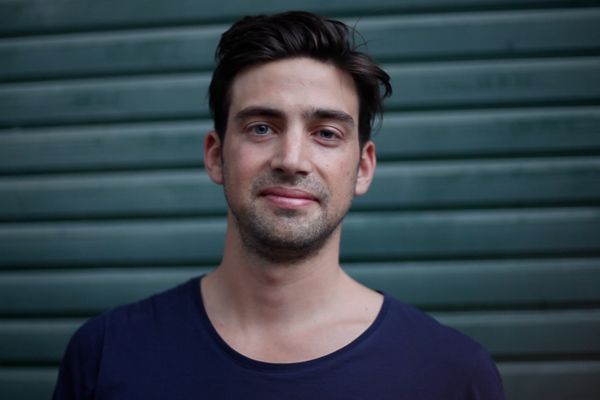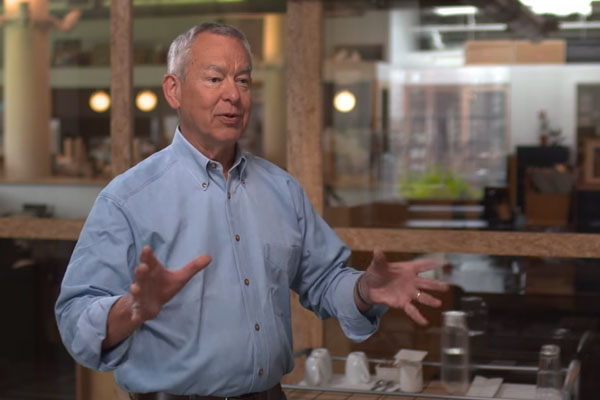We take five mintues to chat with Australian designer, David Caon.

August 7th, 2015
The moment you knew you wanted to work in the design industry.
I think I always wanted to be a designer. Even as a small child I was happiest with a sketch book and some pencils. My grandfather, an Italian immigrant, was very skill full with his hands, being a wool dyer and a carpenter. I’d spend hours in his workshop with him making bits and pieces from scrap timber. even so, it wasn’t until I failed my first year of economics at University that I made the conscious decision to pursue it as a career!
How did you come to be a designer? What first drew you to the practice?
One of my biggest passions is motor cars – always has been, even as a child. Like many young industrial designers, I thought I was going to be a car designer. After graduating I went directly to Europe to try and study car design. instead I started working and assisting in a couple different studios in Milan. That was probably the most exciting period of my career. I learnt so much and was drawn into a broadened understanding of design, which I continue to love and live. I’d still like to design a car one day, but unlikely it will be possible in Australia, which is sad.
What interests you most about this particular field design?
What interests me most about what I do is taking our learnings from different projects we have done or explored and applying them across the different disciplines we work in. We are constantly learning and understanding new ways to approach our craft so no two days are the same.
What has your experience with education design been?
Apart from my own studies, I’ve had very little experience with design education. I’m a very big believer in learning by doing in our profession, so when I meet students, I always advise them to think about getting into a studio as soon as possible. I’m a big advocate of exploring design apprenticeships as a form of education rather than the traditional 4 year degree or whatever.
Which items in the workplace can you not live without?
firstly a good pen and sketch book is super important. Marc taught me to be really fussy about those two things. currently I’m favouring Kaweco fountain pens (but keep losing them!) and Staedtler triplus fineliners. Secondly my staff. Having a good team is critical. Finally yet foremost my wife. She works from my studio and is my biggest support. she keeps the whole thing together most days!
What have been your favourite three products this year?
it’s quite hard to say as there is a lot coming out product wise and I’m not necessarily across when and how. I very much liked the Bouroullecs new chair with Magis. The use of wrought iron was ironic, clever and beautiful. The fabrics the Raf Simmons and Kvadrat have developed the last couple of years are incredible and give a new appreciation for colour and texture.
Your top influences.
My influences change all the time, especially the more I’m exposed to new and different work. Traditionally I’ve always loved Italian and Japanese design. The two places in the world, apart from Australia, closest to my heart. Castiglioni, Colombo, Scarpa and Kuramata are, of course, gods. The designers I worked with now and for in the past are also hugely influential, especially Marc and Jerszy.
Favourite material.
I don’t really have a favourite, I think that’s rare in a designer. When I’m working on aerospace projects, I do love designing for machined aluminium. Brass is very trendy at the moment, but I’m fascinated by a beautifully machines brushed aluminium part or object.
Favourite local landmark/building.
I love the brutalist housing commission building in the rocks. I think it’s a building that divides opinion a lot but the modularity of the design and the texture of the concrete as well as the aspect of the building very much appeals to me.
Favourite international landmark/building.
I’ve always loved Palais De Tokyo in Paris. I’d go there often to see te exhibitions and check out the skateboarding. I have a lot of great memories there. I’m always in awe of the Duomo in Milan no matter how often I visit it.
Biggest career moment.
There have been significant moments, especially during my time in Europe, however I think both completing our first aircraft interior for Qantas last year and winning the Sydney design award this year were pretty big moments for us.
Concern for the design industry in the coming decade.
Time. I think we are no longer allowed the luxury of time to consider projects. the world is moving at a terrific pace with technology and as a consequence design is expected to be executed in shorter spaces of time. We have the technology to do it faster, however it doesn’t mean it’s better. Creativity is something that happens in the right moment and projects need to be properly considered.
Dream person to collaborate with.
Joe Colombo.
See David Caon’s work on display at Living Edge showroom during Sydney Indesign 2015, 13–15 August.
A searchable and comprehensive guide for specifying leading products and their suppliers
Keep up to date with the latest and greatest from our industry BFF's!

BLANCOCULINA-S II Sensor promotes water efficiency and reduces waste, representing a leap forward in faucet technology.

Schneider Electric’s new range are making bulky outlets a thing of the past with the new UNICA X collection.

Research by Gray Puksand found that a sensitive, community-focussed approach was key to ensuring alternative flexible education schools best support students, Mark Freeman reports.

With billions of years experience designing the most complex, efficient and waste-free systems, it’s no wonder designers are looking to nature for inspiration. In this video, we hear from four leading architects and designers as they discuss how they apply Biomimicry to their designs and how they went from inspiration to deeper learning and ultimately application to their work.
The internet never sleeps! Here's the stuff you might have missed

Homing in on the experiential, HAS design and research has once again conceived a retail space that transports the customer to another, more wonderful, ethereal world.

The Yohoo Museum, situated in Hangzhou’s Yuhang District, is a project integrating cultural heritage and modern architectural innovation.